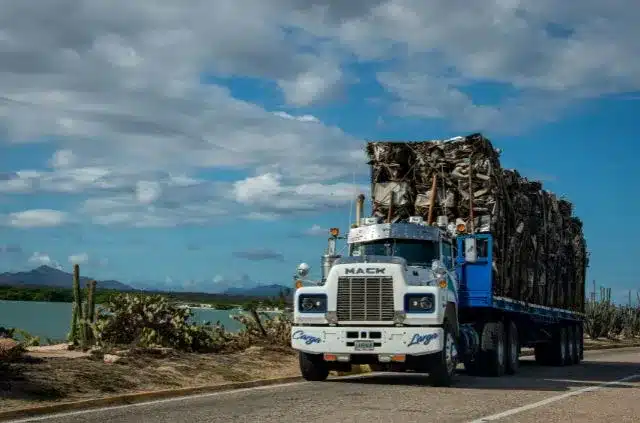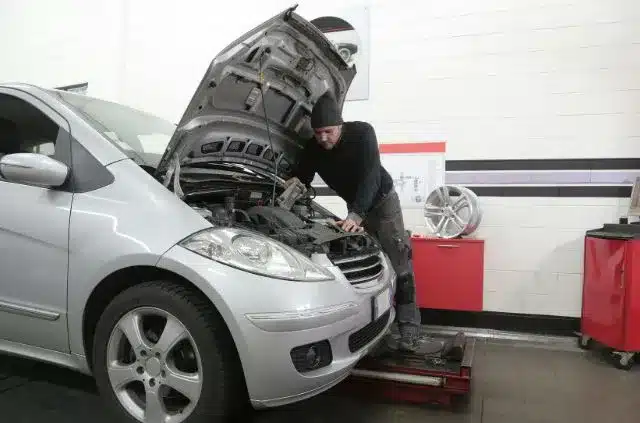Effective management of commercial vehicles requires a firm understanding of safety protocols and training requirements. For business leaders in industries such as construction, logistics, and landscaping, prioritizing these practices is essential for ensuring operational efficiency and minimizing risks. By implementing comprehensive safety measures and ensuring proper training for drivers and operators, businesses can protect their employees, improve productivity, and maintain regulatory compliance.
The Role of Safety in Construction and Related Industries
The construction industry plays a critical role in the U.S. economy, with a staggering 919,000 construction establishments operating nationwide in the first quarter of 2023, according to the Associated General Contractors of America (AGC). These businesses often depend on fleets of commercial vehicles to transport materials, equipment, and personnel. Leaders in this sector must recognize that maintaining safety standards for these vehicles is essential for sustaining operations and avoiding costly incidents.
Understanding CDL Requirements for Commercial Drivers
Truck drivers operating large commercial vehicles, particularly those exceeding 26,000 pounds in weight, must possess a valid Commercial Driver’s License (CDL). According to federal regulations, this licensing ensures drivers are adequately trained to handle the unique challenges of operating heavy vehicles, such as navigating sharp turns, managing blind spots, and understanding braking distances.
Employers should verify that all drivers in their fleet hold the appropriate CDL endorsements for their vehicles, such as those for hazardous materials or tankers. Regular checks and ongoing training ensure drivers remain compliant with federal and state regulations, reducing liability risks and enhancing safety on the road.
The Importance of Vehicle Maintenance and Inspections
Routine vehicle maintenance is a cornerstone of safety in industries that rely on commercial vehicles. Scheduled inspections help identify potential issues, such as worn brakes, fluid leaks, or tire damage, before they lead to accidents or costly downtime.
This is particularly important for specialized vehicles used in landscaping or construction, such as hydroseeding trucks. For instance, when applying hydroseeding slurry near buildings, it’s critical to grade the soil so it slopes downward by at least two inches over every 100 feet. According to industry best practices, this precaution prevents water from pooling near structures, which could lead to foundation damage or safety hazards. Proper vehicle functionality is essential for executing tasks like this efficiently and safely.
Comprehensive Driver Training Programs
Driver training is fundamental to maintaining a safe and compliant fleet. Beyond obtaining a CDL, operators must receive additional training tailored to the specific vehicles they will handle and the tasks they will perform.
Key Training Components
- Vehicle Operation: Drivers should be well-versed in the unique controls and mechanics of their assigned vehicles, whether they’re operating a flatbed truck, a hydroseeding machine, or a dump truck.
- Cargo Handling: Training should emphasize proper loading and securing of cargo to prevent shifting or spillage, which can cause accidents.
- Defensive Driving: Drivers must learn techniques for anticipating and reacting to road hazards, weather conditions, and the actions of other drivers.
Ongoing education and refresher courses help ensure drivers remain informed about new regulations and best practices, fostering a culture of accountability and safety within the organization.
Leveraging Technology to Improve Safety
Advancements in technology have significantly enhanced vehicle safety. Business leaders should consider integrating tools such as telematics systems, which monitor driver behavior and vehicle performance in real-time. These systems provide insights into issues like harsh braking, speeding, or excessive idling, enabling managers to address problems proactively.
Other technologies, such as collision avoidance systems and lane departure warnings, can further reduce the likelihood of accidents. Investing in these safety tools demonstrates a commitment to protecting employees and optimizing fleet performance.
Creating a Culture of Safety for Long-Term Success
For industries like construction, landscaping, and logistics, safety isn’t just a legal requirement—it’s a critical factor in long-term success. By prioritizing vehicle maintenance, ensuring compliance with CDL regulations, and implementing robust training programs, business leaders can create safer workplaces and enhance operational efficiency.
According to AGC data, the sheer size of industries reliant on commercial vehicles underscores the importance of these measures. Leaders who proactively address safety set their businesses apart, protecting both their employees and their bottom line.



